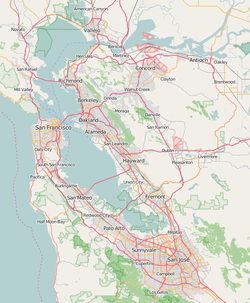John Muir National Historic Site | |
 | |
| Location | 4202 Alhambra Avenue, Martinez, California |
|---|---|
| Coordinates | 37°59′29″N122°08′00″W / 37.991311°N 122.133298°W |
| Area | 345 acres (140 ha) |
| Built | 1883 |
| Architect | Wolfe & Son; Martinez, Vicente |
| Architectural style | Italianate-Victorian [2] |
| Visitation | 49,376 (2016) [3] |
| Website | John Muir National Historic Site |
| NRHP reference No. | 66000083 [4] |
| CHISL No. | 312 [5] |
| Significant dates | |
| Added to NRHP | October 15, 1966 |
| Designated NHL | December 29, 1962 [6] |
| Designated NHS | August 31, 1964 [2] |
The John Muir National Historic Site is located in the San Francisco Bay Area, in Martinez, Contra Costa County, California. It preserves the 14-room Italianate Victorian mansion where the naturalist and writer John Muir lived, as well as a nearby 325-acre (132 ha) tract of native oak woodlands and grasslands historically owned by the Muir family. The main site is on the edge of town, in the shadow of State Route 4, also known as the "John Muir Parkway." [7]










